You’ll discover that Arizona’s harsh desert environment actually creates some of the most resilient, low-maintenance plants on Earth. These native species have spent thousands of years perfecting water conservation techniques, developing deep root systems that extend 15-20 feet underground and waxy coatings that prevent moisture loss. While most gardeners struggle with Arizona’s 115°F summers and sporadic rainfall patterns, you can work with nature instead of against it by choosing plants that already call this challenging landscape home.
Contents
- 1 Arizona’s Diverse Climate Zones
- 2 Arizona’s Most Vibrant Wildflowers
- 3 Arizona’s Hardy Native Trees
- 4 Arizona’s Resilient Desert Shrubs
- 5 Selecting the Right Native Plants for Your Garden
- 6 Frequently Asked Questions
- 6.1 How Often Should I Water Newly Planted Native Arizona Plants?
- 6.2 What Time of Year Is Best for Planting Drought-Resistant Natives?
- 6.3 Do Arizona Native Plants Need Special Fertilizer or Soil Amendments?
- 6.4 How Long Does It Take for Native Plants to Establish Roots?
- 6.5 Can I Grow Arizona Natives in Containers or Pots?
Arizona’s Diverse Climate Zones
When you’re selecting drought-resistant plants for Arizona, understanding the state’s dramatic climate variations becomes your first essential step. You’ll encounter USDA Hardiness Zones ranging from 4b to 10b, creating wildly different growing conditions across the state.
In Flagstaff’s Zone 6a, you’re dealing with winter minimums hitting -10°F, demanding exceptional plant resilience. Meanwhile, Phoenix’s Zone 10a rarely drops below 30°F, supporting heat-loving species year-round.
Climate adaptation requirements shift dramatically with elevation and geography. High desert regions experience freezing winters and scorching summers, while low deserts stay consistently hot and dry. The color-coded areas on USDA maps make identifying your specific zone straightforward for better plant selection decisions.
Arizona’s Most Vibrant Wildflowers
Arizona’s desert landscapes burst with colorful wildflowers throughout the year, featuring distinct spring showcases, summer bloomers, extended flowering periods, specialized desert species, and popular native garden selections. These wildflowers provide crucial support for local pollinators and contribute significantly to the state’s ecological balance.
Desert Marigold (Baileya Multiradiata)
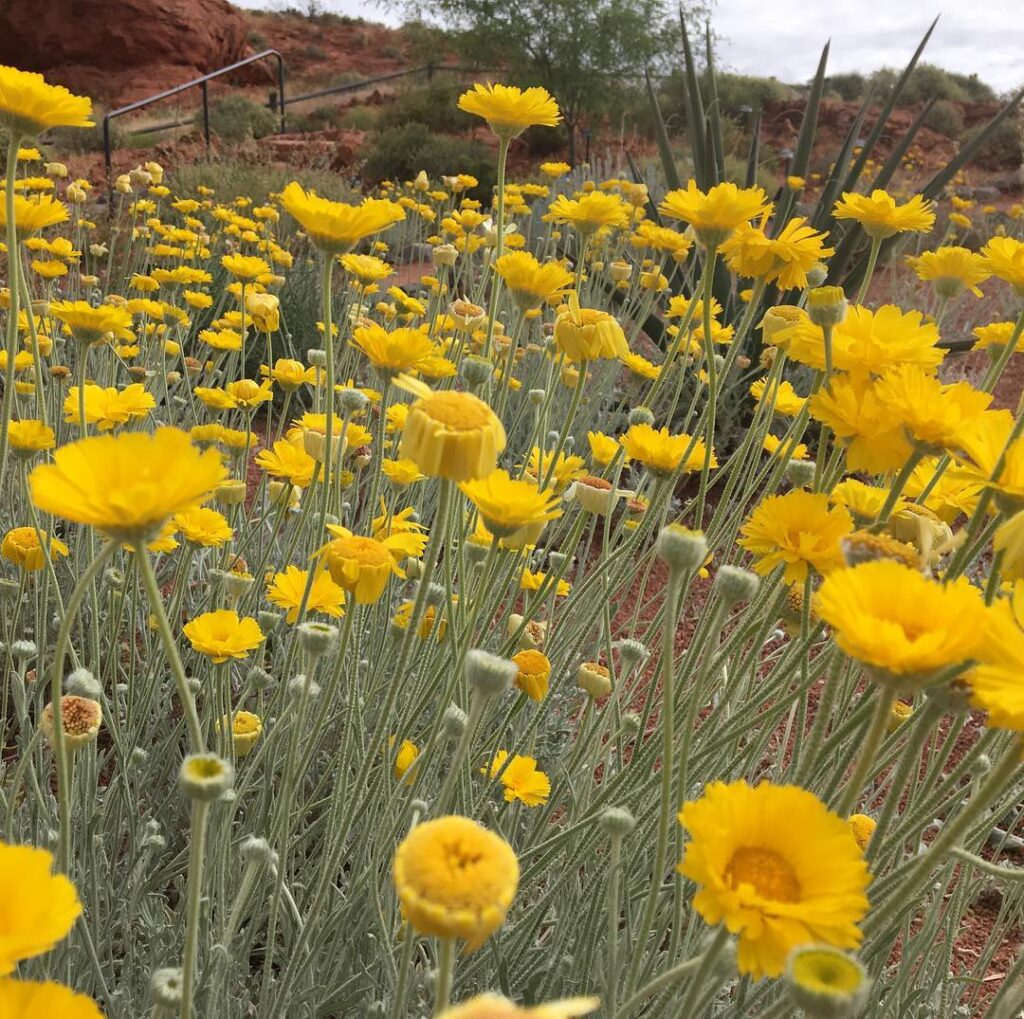
Desert Marigold (Baileya multiradiata) stands out as one of Arizona’s most cheerful and resilient wildflowers. This compact native plant produces abundant bright yellow, daisy-like blooms on long stems throughout most of the year, creating stunning displays in the harsh desert landscape. Growing 12-18 inches tall with distinctive fuzzy, grayish-green foliage covered in soft white hairs, Desert Marigold thrives where few other plants can survive.
Perfect for xeriscaping and desert gardens, this short-lived perennial readily reseeds itself and adapts to the most challenging conditions. Its extended blooming period from March through November, combined with its tolerance for poor soils and extreme drought, makes it invaluable for naturalistic plantings and roadside revegetation projects across the Southwest. The flowers provide essential nectar for bees, butterflies, and other pollinators, making it an ecologically valuable addition to native landscaping.
- Hardiness: Cold tolerant; thrives at elevations below 5,000 feet in Southwest regions
- Light: Full sun
- Water: Extremely drought tolerant; minimal water requirements once established
- Soil: Adaptable to poor, dry, gravelly, caliche, clay, sandy, and loamy soils
- Fertilizer: None required; thrives in nutrient-poor conditions
- Pest/Disease Resistance: Excellent resistance due to native adaptation
- Growth Rate: Moderate; readily establishes in disturbed areas and reseeds prolifically
Ghost Plant (Graptopetalum Paraguayense)
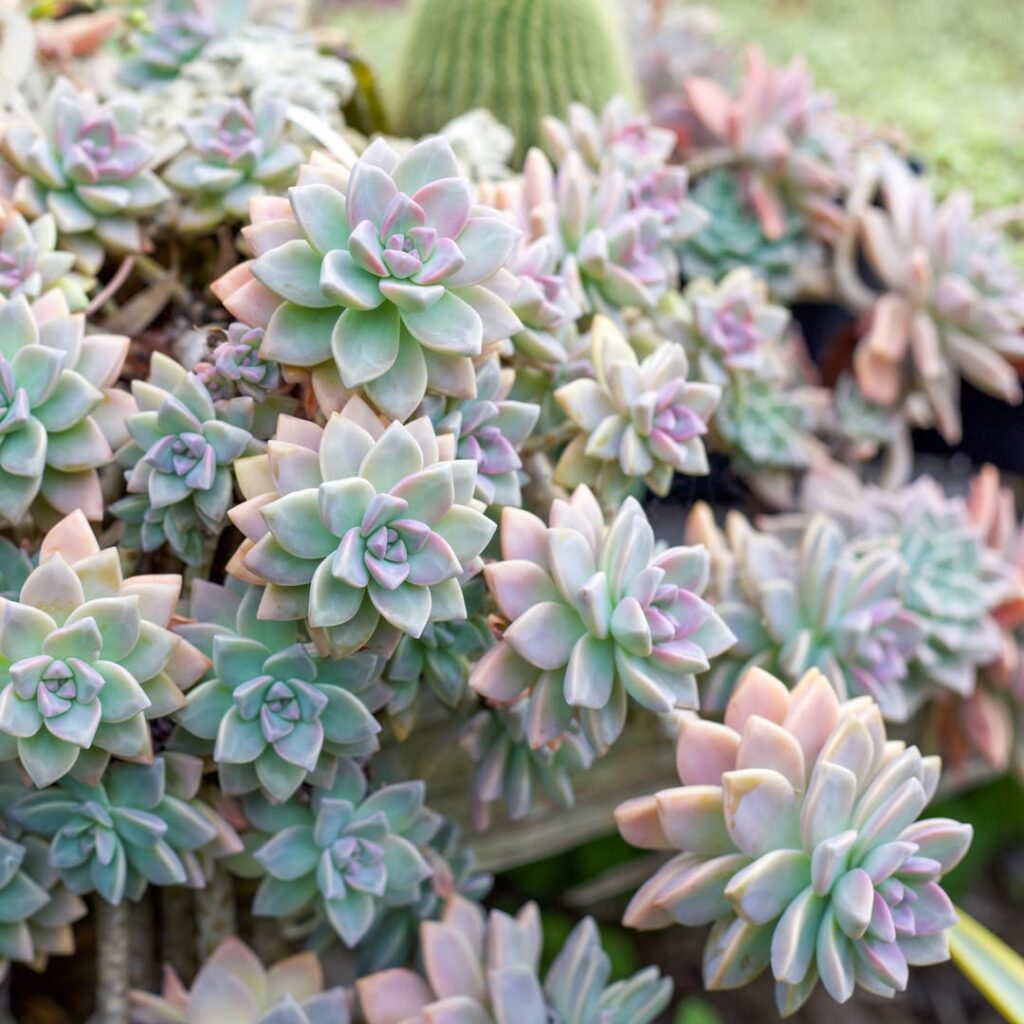
The Ghost Plant (Graptopetalum paraguayense) is a striking succulent native to Mexico that has become a prized addition to Arizona’s drought-resistant garden palette. This low-maintenance member of the Crassulaceae family forms compact rosettes of blue-gray to silvery leaves that create a distinctive, ghostly aesthetic in desert landscapes. Its spreading, creeping growth habit makes it ideal for groundcover, rock gardens, or container plantings.
Reaching up to 20 cm in height and 60 cm in width, the Ghost Plant produces charming star-shaped white flowers with red spots in spring. Its thick, fleshy leaves store water efficiently, while a protective waxy coating reduces water loss and provides sun protection. This hardy succulent thrives in Arizona’s arid climate and is perfect for xeriscaping projects aimed at water conservation.
The Ghost Plant is also known as the mother-of-pearl succulent due to its distinctive lustrous appearance. Home gardeners can easily expand their collection through simple propagation methods using offsets or leaf cuttings.
- Hardiness: USDA zones 9-11; tolerates temperatures down to 20°F but prefers warmer conditions
- Light: Full sun to partial sun; thrives in direct sunlight and heat
- Water: Very low water requirements; drought-tolerant with minimal watering needs
- Soil: Well-draining, sandy, or rocky soils; excellent drainage essential
- Fertilizer: Minimal to no fertilizer required; thrives in nutrient-poor soils
- Pest/Disease Resistance: High resistance; very few pest or disease issues
- Growth Rate: Moderate; spreads readily through trailing stems and easy propagation
Brittlebush (Encelia Farinosa)
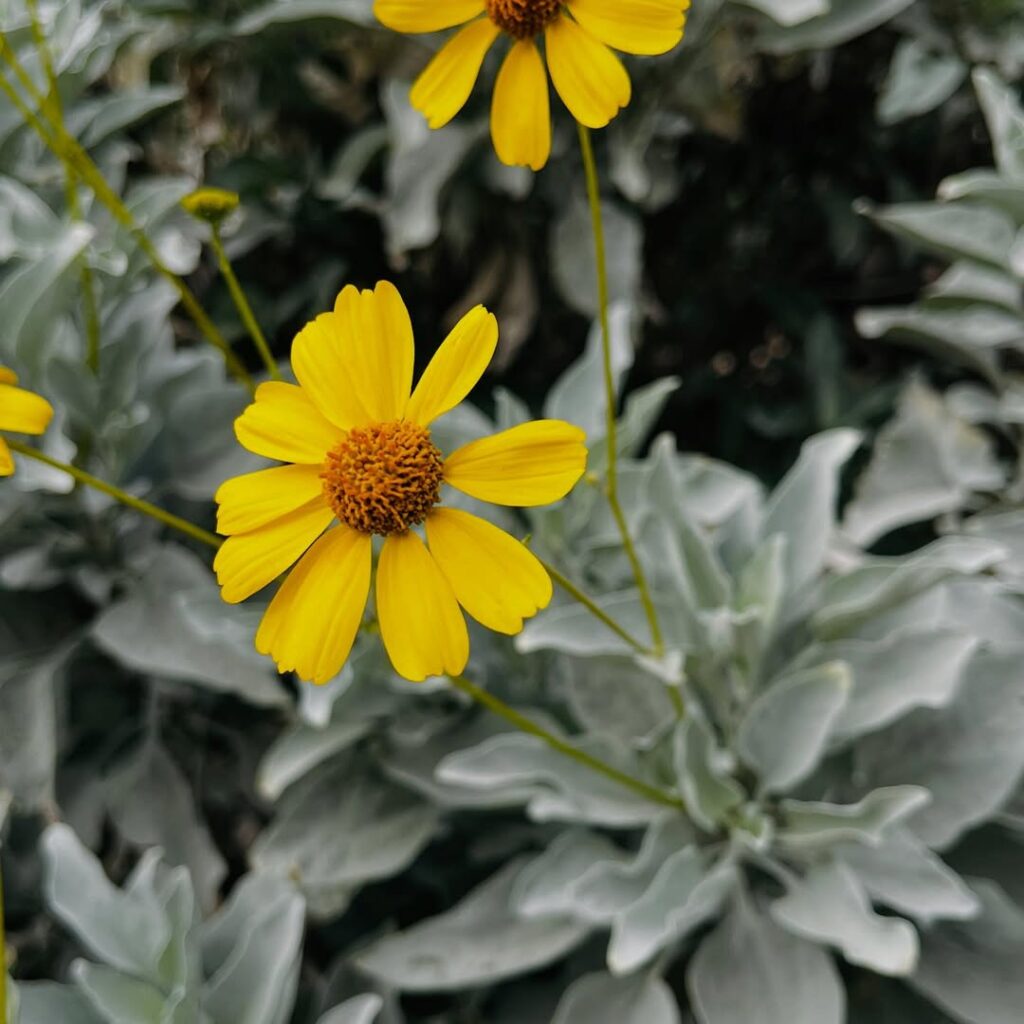
Brittlebush (Encelia farinosa) stands out as one of Arizona’s most spectacular wildflowers, producing masses of bright yellow, daisy-like blooms that create stunning displays across the desert landscape. This evergreen shrub reaches 3-5 feet tall with distinctive gray-green leaves covered in fine white hairs that help reflect intense desert sunlight.
During dry periods, Brittlebush demonstrates remarkable adaptation by shedding its foliage and relying on water stored in its thick, woody stems. The plant blooms primarily from February to May and again from August to September, though it may flower year-round following adequate monsoon rains, making it a reliable source of color in desert gardens. Wildlife enthusiasts will appreciate that Brittlebush provides essential habitat and cover for local desert animals while also serving as a nectar source.
- Hardiness: USDA Zone 7
- Light: Full sun
- Water: Low to very low; drought-tolerant
- Soil: Light, well-drained, rocky or sandy soils
- Fertilizer: None required; adapted to nutrient-poor desert soils
- Pest/Disease Resistance: Excellent; no known major pest or disease issues
- Growth Rate: Moderate
Desert Lupine (Lupinus Sparsiflorus)
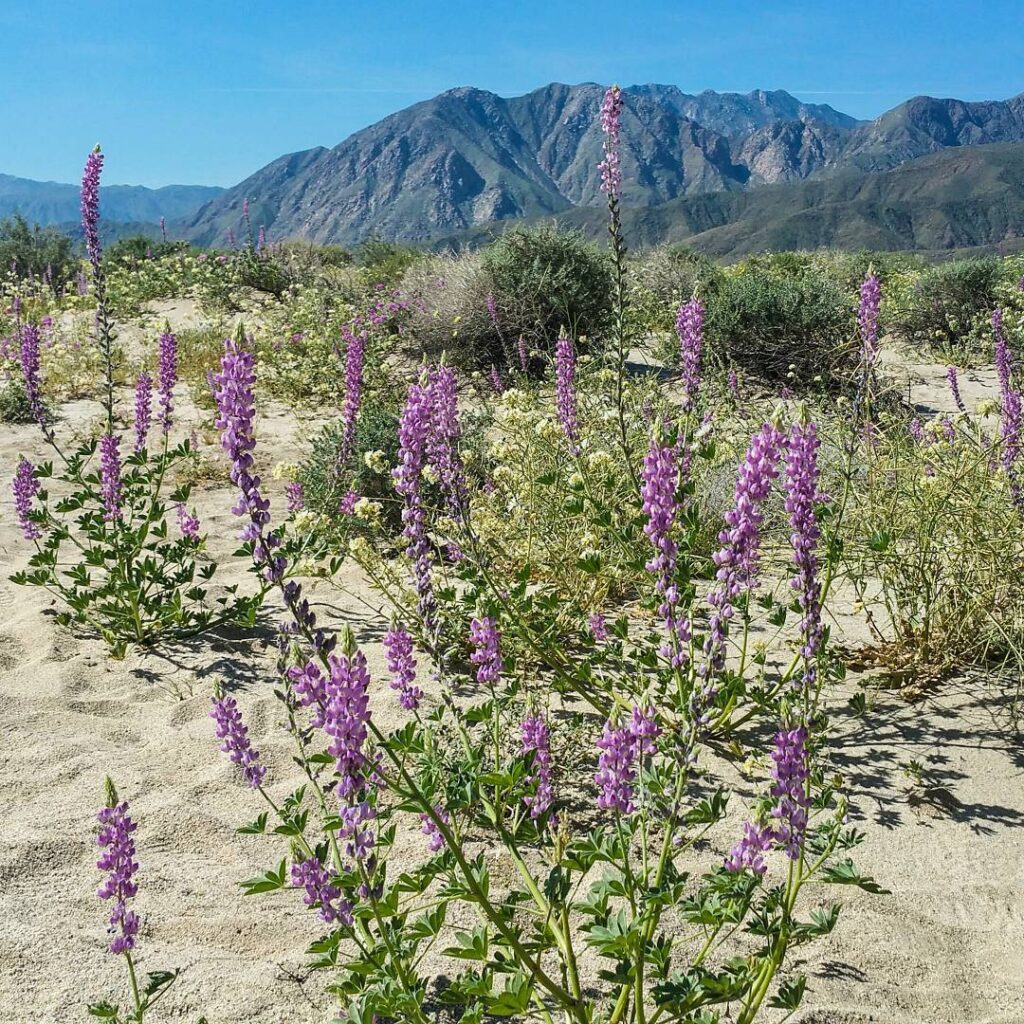
Desert Lupine is one of Arizona’s most stunning native wildflowers, transforming desert landscapes with vibrant violet-blue blooms in spring. This annual herb grows up to 16 inches tall with distinctive palmately compound leaves featuring 7-11 narrow, hairy leaflets. The spiraled flower spikes display pea-like blossoms with yellow spots that turn reddish after pollination.
As a member of the pea family, this drought-adapted wildflower thrives in Arizona’s harsh desert conditions, germinating during cooler months and blooming from January through May. Its rapid growth cycle takes advantage of brief wet seasons, creating spectacular displays following adequate winter rainfall. When mature, the plant’s pods explode to scatter seeds across the desert floor, ensuring the next generation’s survival. While beautiful, all parts of the plant contain toxic alkaloids, making it unsuitable for livestock grazing.
- Hardiness: Annual herb adapted to low desert conditions in USDA zones 8-10
- Light: Full sun exposure required
- Water: Minimal water needs; drought tolerant once established, relies on winter precipitation
- Soil: Well-drained sandy or gravelly soils; tolerates nutrient-poor conditions
- Fertilizer: None required; nitrogen-fixing legume
- Pest/Disease Resistance: Excellent; toxic alkaloids deter herbivores and pests
- Growth Rate: Rapid growth during cooler months with quick flowering cycle
Desert Willow (Chilopsis Linearis)
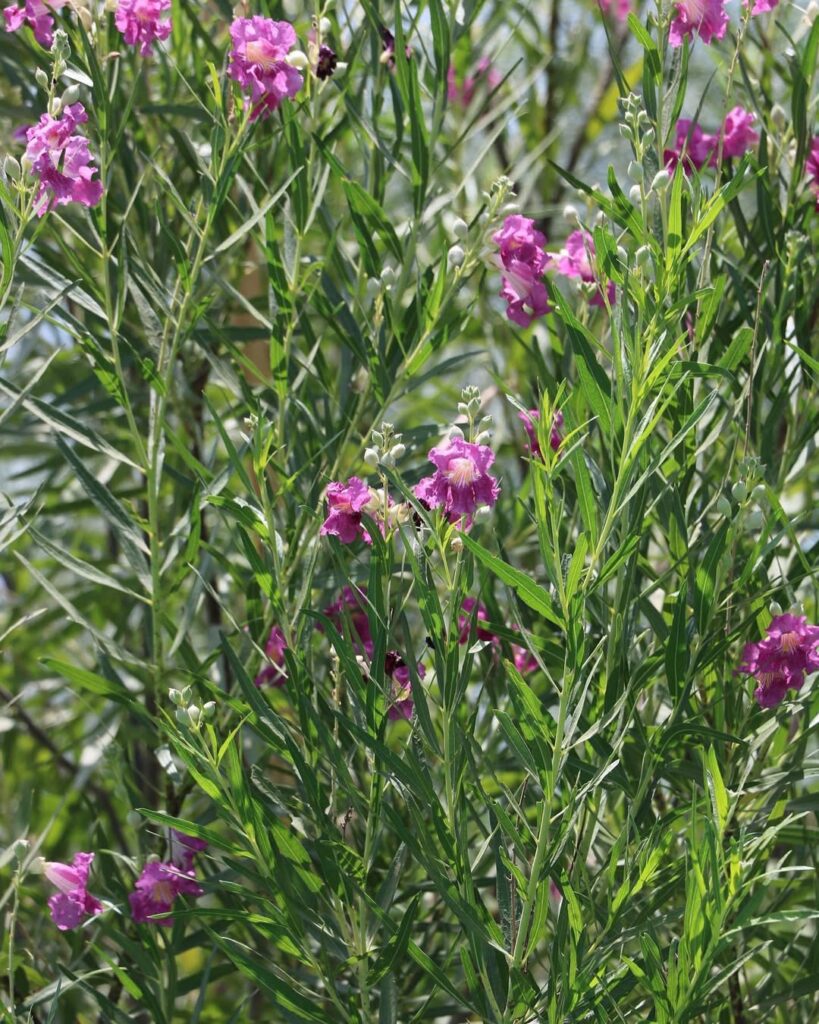
Desert Willow is Arizona’s crown jewel among native flowering plants, producing stunning trumpet-shaped blooms from May through September in colors ranging from pure white to deep purple. This graceful shrub or small tree reaches 15-25 feet tall with an open, airy canopy that provides excellent filtered shade. Despite its name, it’s not a true willow but belongs to the Bignoniaceae family, prized for its exceptional drought tolerance and minimal maintenance requirements in desert landscapes.
The fragrant flowers appear in terminal clusters and attract hummingbirds and butterflies, while the distinctive seed pods add winter interest. Desert Willow thrives in Arizona’s challenging climate, making it an ideal specimen plant for water-wise gardens and natural desert landscaping where reliable color and structure are essential. The plant displays narrow, bright green leaves that complement its vibrant flowering display throughout the growing season.
- Hardiness: USDA Zones 7B-11, tolerates extreme heat and drought conditions
- Light: Full sun exposure for best flowering and growth
- Water: Extremely drought tolerant once established, requires minimal supplemental irrigation
- Soil: Adaptable to most well-draining soil types including clay, loam, sand, and rocky soils; tolerates both acidic and alkaline conditions
- Fertilizer: No fertilization needed; thrives in poor, native desert soils
- Pest/Disease Resistance: Excellent resistance to most pests and diseases common in arid climates
- Growth Rate: Rapid growth rate, quickly establishing in landscape settings
Arizona’s Hardy Native Trees
Arizona’s diverse desert landscapes support remarkable native trees that have evolved to thrive despite extreme heat, scarce rainfall, and challenging soil conditions throughout the state. These hardy specimens often feature green trunks that contribute to photosynthesis year-round, helping them maximize energy production even when leaves are absent.
Palo Verde (Parkinsonia Florida)
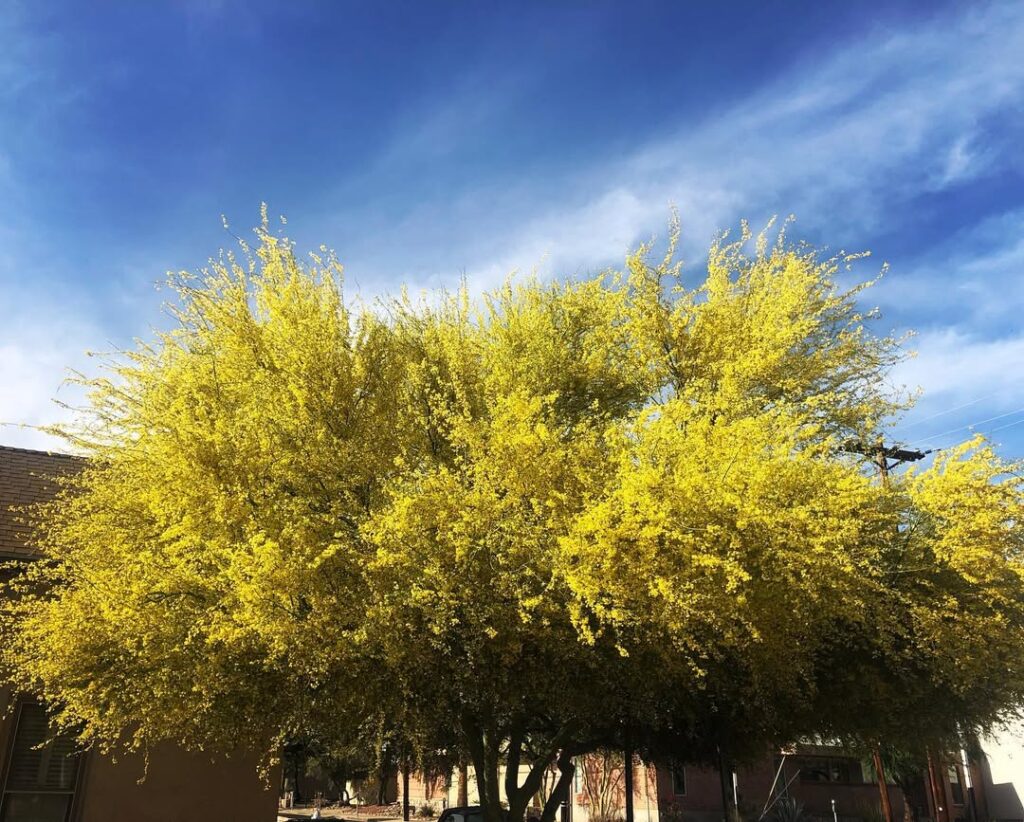
The Palo Verde (Parkinsonia florida) stands as Arizona’s iconic state tree, perfectly adapted to the harsh Sonoran Desert environment. This multi-trunked native reaches 25-30 feet with a distinctive spreading canopy and bright green bark that continues photosynthesis even during drought periods when leaves are absent.
During mid-to-late spring, the tree transforms into a spectacular display of brilliant yellow flowers, followed by flattened seed pods. Its remarkable drought tolerance and fast growth make it an excellent choice for xeriscape gardens, providing essential shade and wildlife habitat while requiring minimal water once established. The tree was formerly classified as Cercidium floridum before being recently renamed to its current botanical designation.
- Hardiness: Zones 8-11, tolerates temperatures down to 12°F
- Light: Full sun required for ideal growth and flowering
- Water: Highly drought tolerant; minimal water once established, benefits from monthly deep summer irrigation
- Soil: Well-drained soils essential, thrives in rocky desert conditions
- Fertilizer: No supplemental fertilization needed in native soils
- Pest/Disease Resistance: Susceptible to mistletoe, palo verde beetles, and witches broom; generally hardy
- Growth Rate: Fast-growing, especially with supplemental water (though this may weaken limbs)
Mesquite (Prosopis Velutina)

Velvet mesquite (Prosopis velutina) is a small to medium-sized native tree distinguished by its fuzzy, pubescent foliage that gives it a characteristic “velvet” appearance. This hardy desert species features dark, shaggy bark and paired thorns up to 2 inches long on zigzagged branches. Growing 25-40 feet tall with an irregular spreading crown, it serves as an excellent shade tree.
Native to Arizona’s Sonoran Desert and surrounding regions, velvet mesquite thrives in elevations below 4,000-5,000 feet. As a member of the legume family, it contributes to soil health through nitrogen fixation while providing essential habitat and food sources for desert wildlife through its seed pods. The tree produces highly regarded honey when bees pollinate its small yellow flower clusters that bloom in dense catkins during spring.
- Hardiness: Cold hardy to 0°F, USDA zones 8-10
- Light: Full sun
- Water: Drought tolerant once established; benefits from deep monthly watering in summer
- Soil: Well-draining soils; adaptable to various desert soil types
- Fertilizer: Generally not needed due to nitrogen-fixing capability
- Pest/Disease Resistance: Excellent resistance to desert pests and diseases
- Growth Rate: Moderate growth rate in landscape settings
Arizona White Oak (Quercus Arizonica)
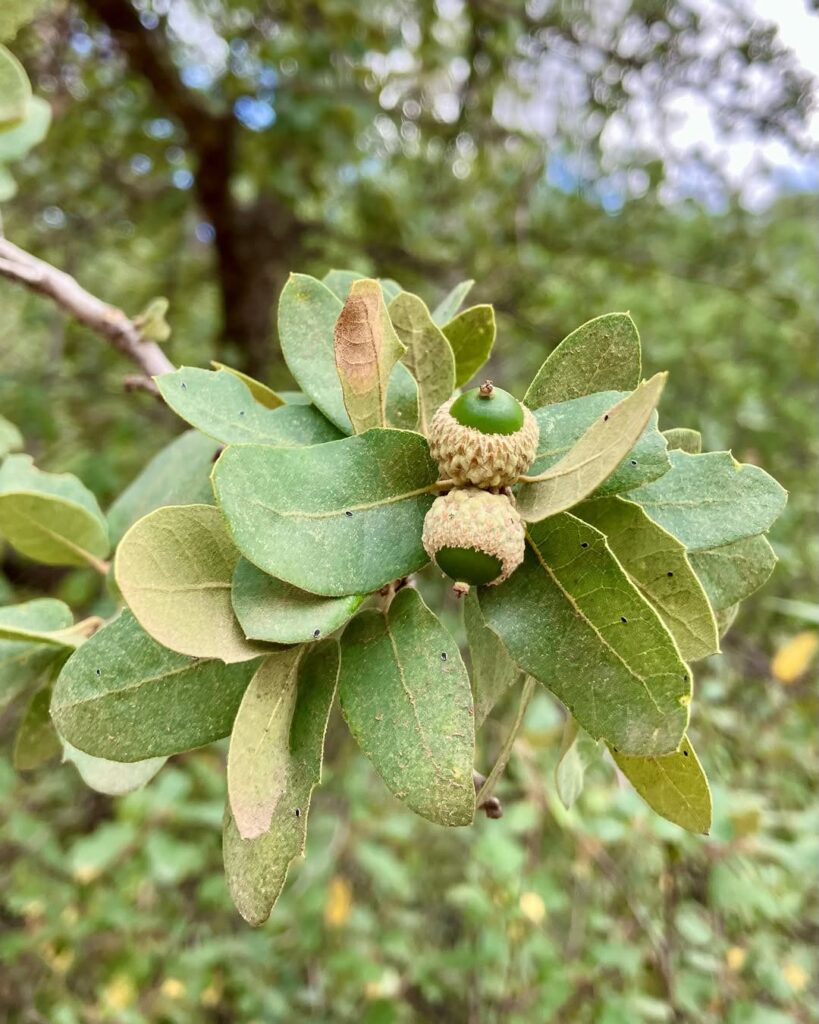
The Arizona White Oak is a remarkably hardy native tree that serves as an excellent choice for drought-resistant landscaping in Arizona. Growing 50-60 feet tall with a distinctive spreading crown and light grayish bark, this medium-sized tree features evergreen to semi-evergreen leaves and produces acorns that provide essential food for local wildlife.
This slow-growing oak demonstrates exceptional urban tolerance with 100% survival rates in field trials, making it suitable for Arizona gardens. As a keystone species, it attracts numerous birds and insects while requiring minimal maintenance once established, thriving in the state’s challenging desert conditions. These trees naturally occur in mountainous areas above 5,495 feet in elevation throughout their native range.
- Hardiness: USDA zones corresponding to temperatures as low as 5°F
- Light: Full to part sun (young trees benefit from afternoon shade in low desert areas)
- Water: Moderate water requirements with high drought tolerance once established
- Soil: Prefers sandy or rocky soil; amendments encouraged for optimal growth
- Fertilizer: Very low maintenance requirements; specific fertilizer needs not specified
- Pest/Disease Resistance: Excellent urban tolerance with high survival rates
- Growth Rate: Very slow, adding approximately 0.25 cm diameter per year when mature
Arizona Cypress (Cupressus Arizonica)
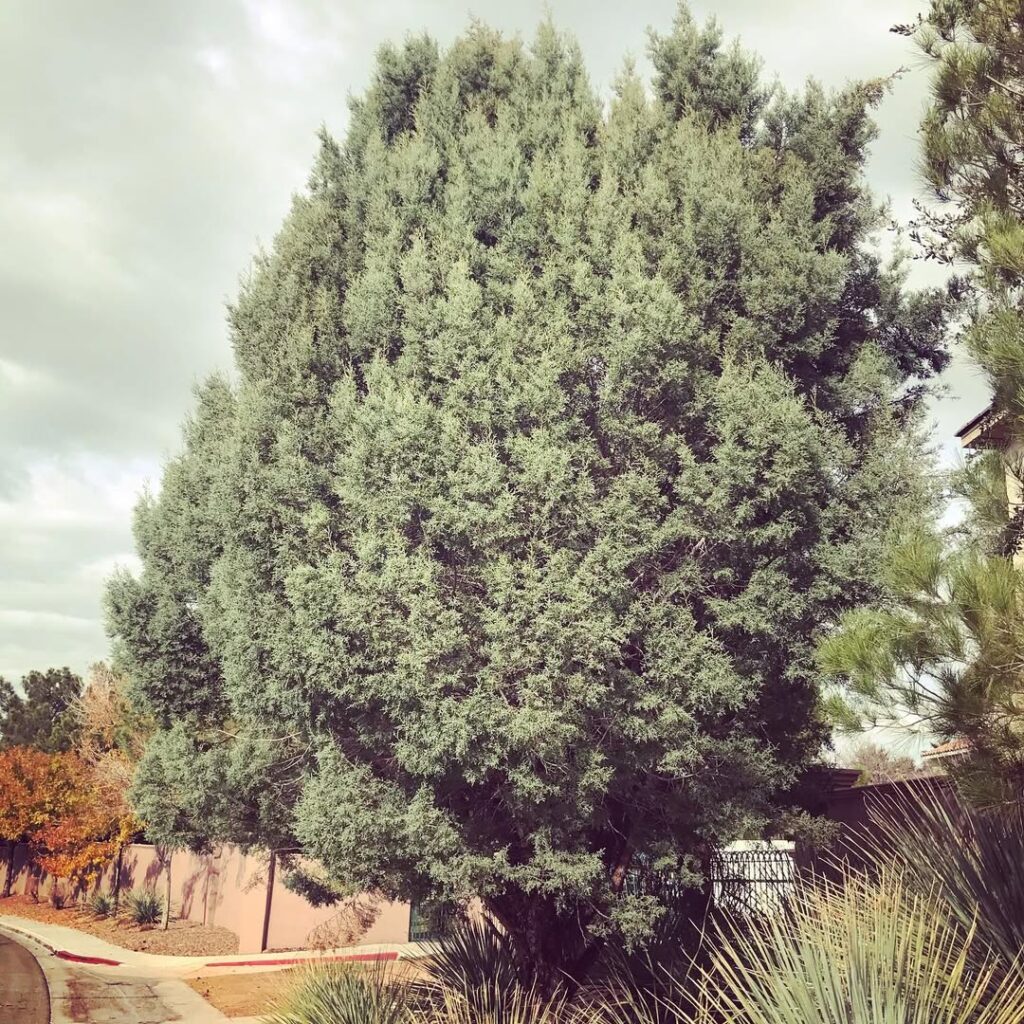
Arizona Cypress is a rugged, medium-sized evergreen native to the southwestern United States that typically reaches 50-60 feet tall. This drought-tolerant tree features dense, scale-like foliage ranging from gray-green to blue-green and develops a distinctive conic crown. Its showy bark and upright growth habit make it an excellent choice for native landscaping.
Highly adaptable to Arizona’s arid conditions, Arizona Cypress thrives in mountainous regions and performs exceptionally well in xeriscapes. The tree produces small brown cones and inconspicuous yellow spring flowers, requiring minimal maintenance once established. Its natural drought resistance and tolerance of various soil types make it ideal for windbreaks, screening, and erosion control in desert landscapes. The species provides durable lumber for livestock fencing and serves as an important food source for ground squirrels and other rodents.
- Hardiness: USDA Zones 7b-9a
- Light: Full sun preferred; less vigorous in shade
- Water: Highly drought tolerant; minimal irrigation needed once established
- Soil: Well-drained soils including loam, sand, acidic, and alkaline
- Fertilizer: Minimal fertilizer requirements
- Pest/Disease Resistance: Generally resistant; susceptible to wood breakage at weak crotches
- Growth Rate: Moderate growth rate
Ironwood (Olneya Tesota)
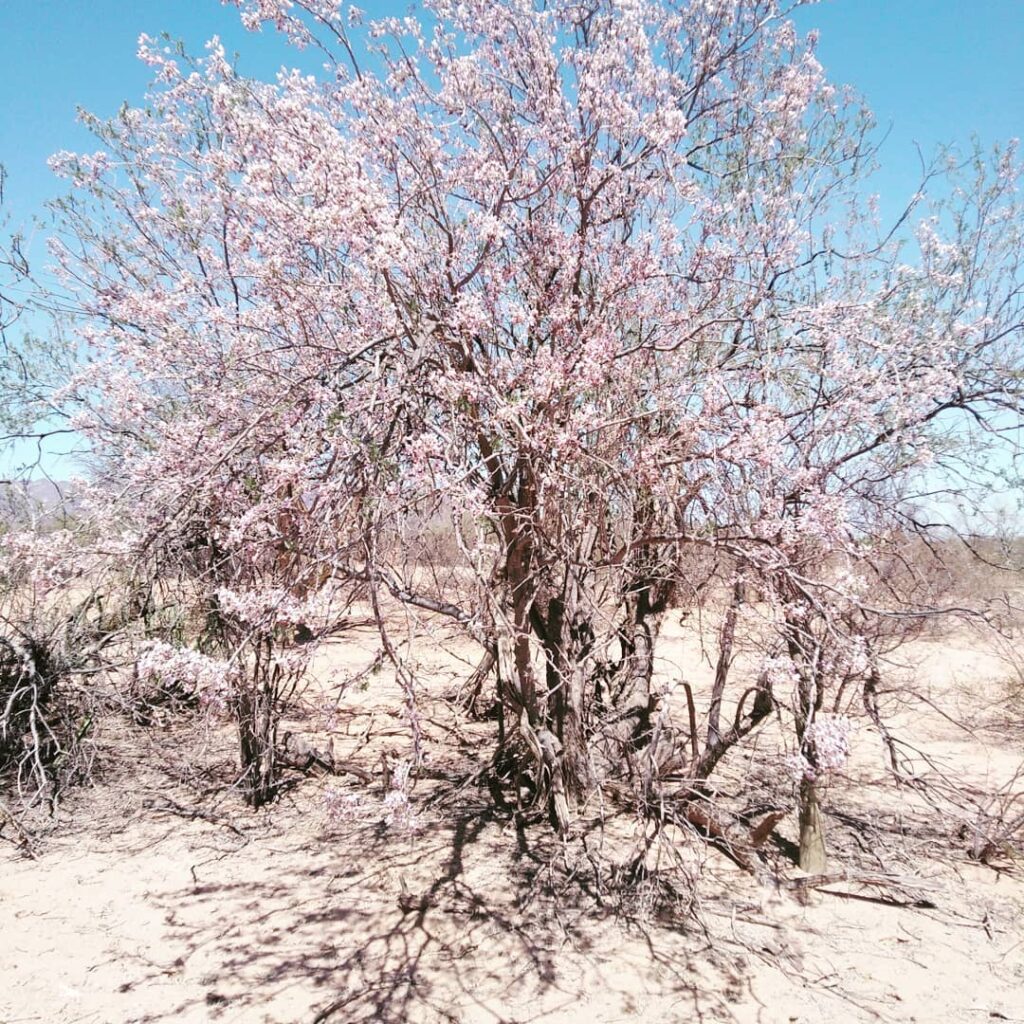
Ironwood (Olneya tesota) stands as one of Arizona’s most resilient desert trees, capable of surviving harsh desert conditions for over 1,000 years. This slow-growing native can develop into either a multi-trunked shrub reaching 6 feet or a majestic canopy tree up to 45 feet tall, distinguished by its graceful curved trunks and beautiful spring flowers that attract hummingbirds and other wildlife.
As a keystone species of the Sonoran Desert, Ironwood functions as an essential “nurse plant,” providing shelter and support for numerous other desert flora and fauna. Its ecological importance is so significant that the Ironwood Forest National Monument was named in its honor, recognizing its role as an indicator species for healthy desert ecosystems. The tree’s canopies create warmer microenvironments that can be up to 4°C warmer than surrounding areas during winter, protecting understory plants from freezing temperatures.
- Hardiness: USDA zones 9-11, thrives in areas below 3,000 feet elevation with low frost tolerance
- Light: Full sun exposure in desert conditions
- Water: Extremely drought tolerant once established, requires minimal supplemental watering
- Soil: Well-draining desert soils, commonly found in washes and hillside drainages
- Fertilizer: No fertilizer needed, adapted to nutrient-poor desert soils
- Pest/Disease Resistance: Highly resistant to desert pests and diseases
- Growth Rate: Very slow growth rate, contributing to longevity of up to 1,200 years
Arizona’s Resilient Desert Shrubs
Arizona’s desert shrubs exemplify nature’s adaptation to extreme conditions, offering homeowners low-maintenance landscaping solutions. These hardy natives provide color, wildlife habitat, and year-round beauty with minimal water requirements. Cloud Sage produces vibrant purple flowers in spring while requiring minimal maintenance.
Creosote Bush (Larrea Tridentata)
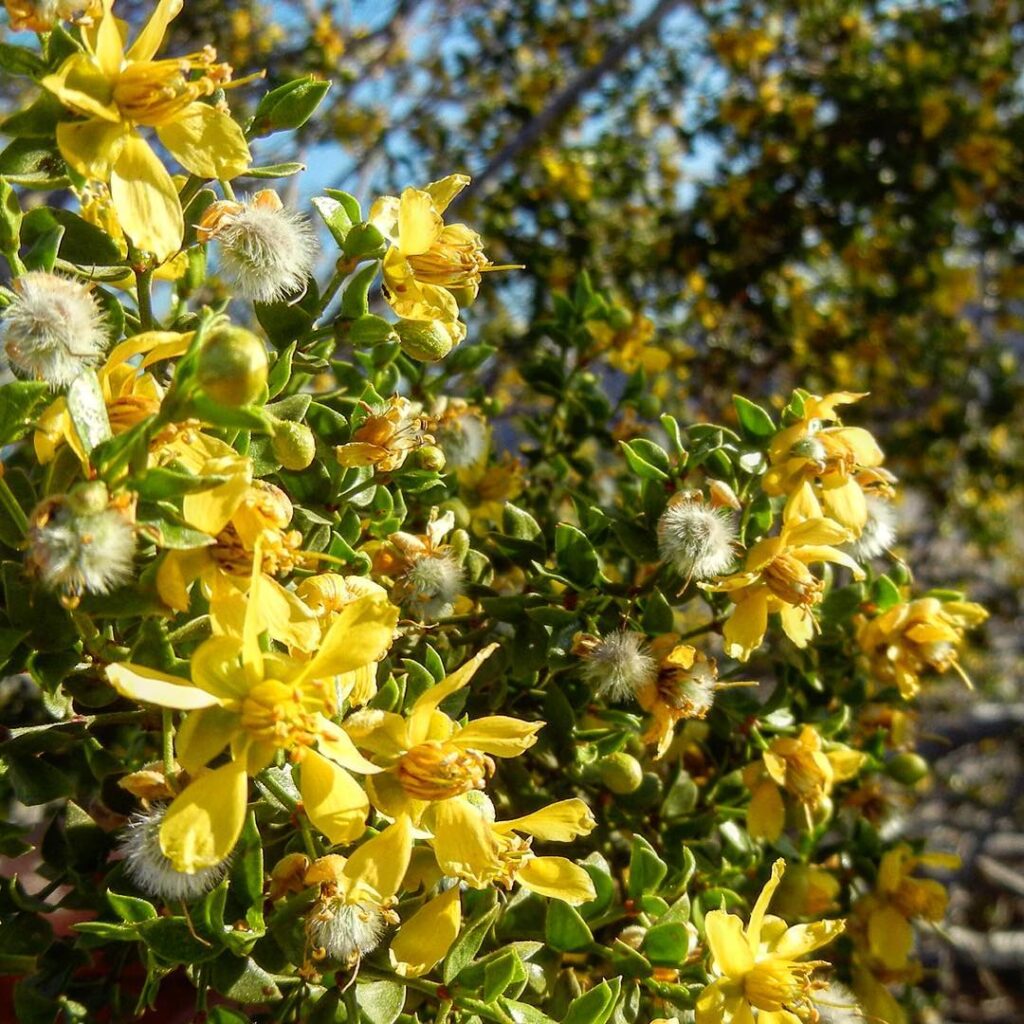
The Creosote Bush stands as Arizona’s most characteristic desert shrub, reaching 3-10 feet tall with tiny, dark green resinous leaves and small yellow flowers. This evergreen perennial is instantly recognizable by its distinctive creosote aroma that intensifies after rainfall, earning it association with “the smell of rain” in desert regions.
Extremely drought-resistant and slow-growing, this resilient shrub thrives in hot North American deserts through specialized adaptations including water-conserving leaf coatings and flexible angled stems. Many plant clusters are actually ancient clones, demonstrating remarkable longevity and successful reproduction strategies that allow extensive stands to dominate desert landscapes. Beyond its ecological importance, creosote provides healing medicine and holds significant cultural value for desert communities.
- Hardiness: USDA zones 8-11, extremely heat and drought tolerant
- Light: Full sun, thrives in intense desert conditions
- Water: Minimal water requirements, established plants survive on natural rainfall
- Soil: Well-draining sandy or rocky desert soils, tolerates poor alkaline conditions
- Fertilizer: None required, adapted to nutrient-poor desert soils
- Pest/Disease Resistance: Highly resistant due to resinous compounds, hosts specialized insects
- Growth Rate: Slow-growing but extremely long-lived
Ocotillo (Fouquieria Splendens)
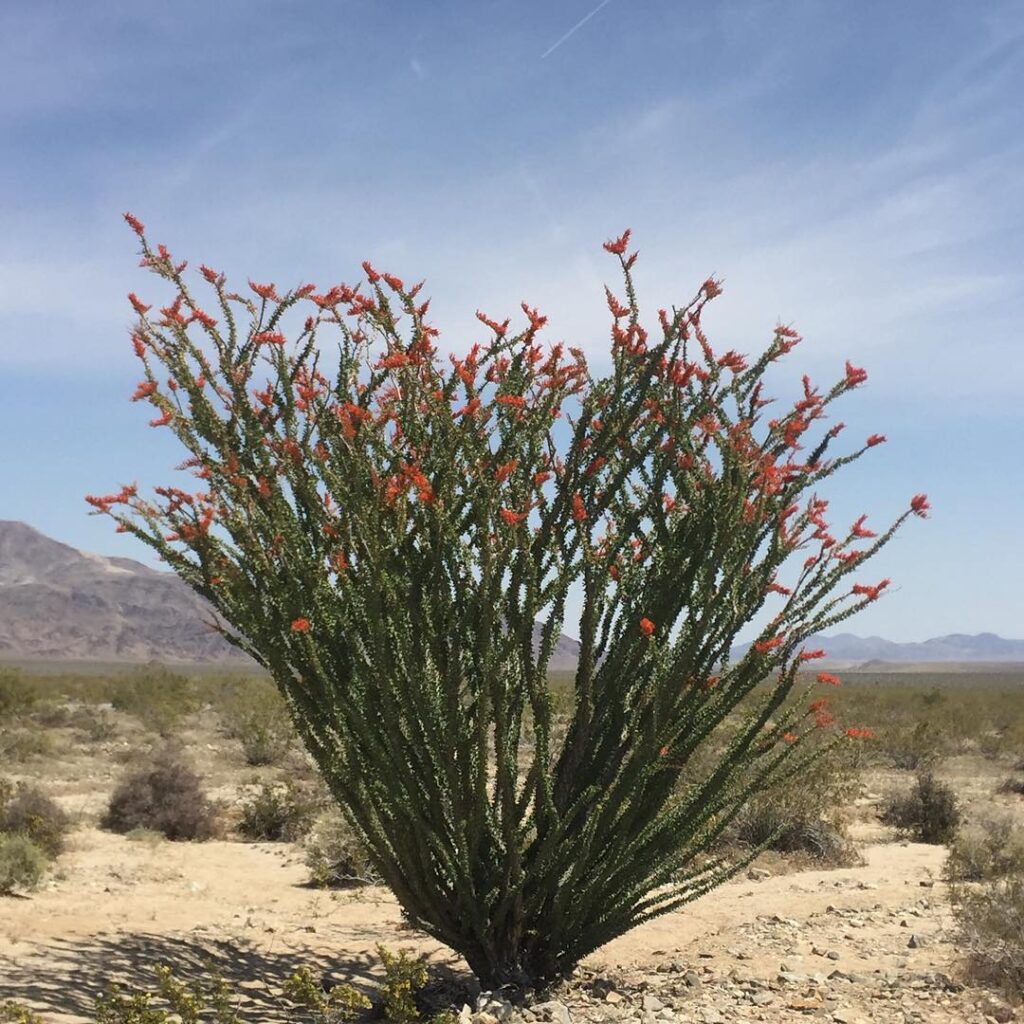
The Ocotillo (Fouquieria splendens) is a striking semi-succulent native to Arizona’s desert regions, characterized by multiple upright, thorn-covered branches that can reach over 15 feet in height. Despite its cactus-like appearance, this resilient plant is more closely related to tea plants and blueberries. It demonstrates remarkable drought adaptation by rapidly shedding and regenerating leaves in response to moisture availability.
From February to May, Ocotillo produces brilliant orange-red tubular flowers at branch tips, attracting hummingbirds as primary pollinators. These mature plants can live for 60-100 years, making them a long-term investment in desert landscaping. This native plant serves as an excellent accent specimen in desert landscapes and plays an essential ecological role as a food source for migrating hummingbirds throughout Arizona’s lower elevation desert ecosystems.
- Hardiness: USDA zones 8-11, tolerates temperatures down to 10°F
- Light: Full sun, prefers south-facing slopes and heat
- Water: Extremely drought tolerant, low water requirements once established
- Soil: Well-drained rocky or sandy soils, requires excellent drainage
- Fertilizer: None required, adapted to nutrient-poor desert soils
- Pest/Disease Resistance: Excellent resistance, very few pest or disease issues
- Growth Rate: Slow to moderate growth rate in desert conditions
Jojoba (Simmondsia Chinensis)
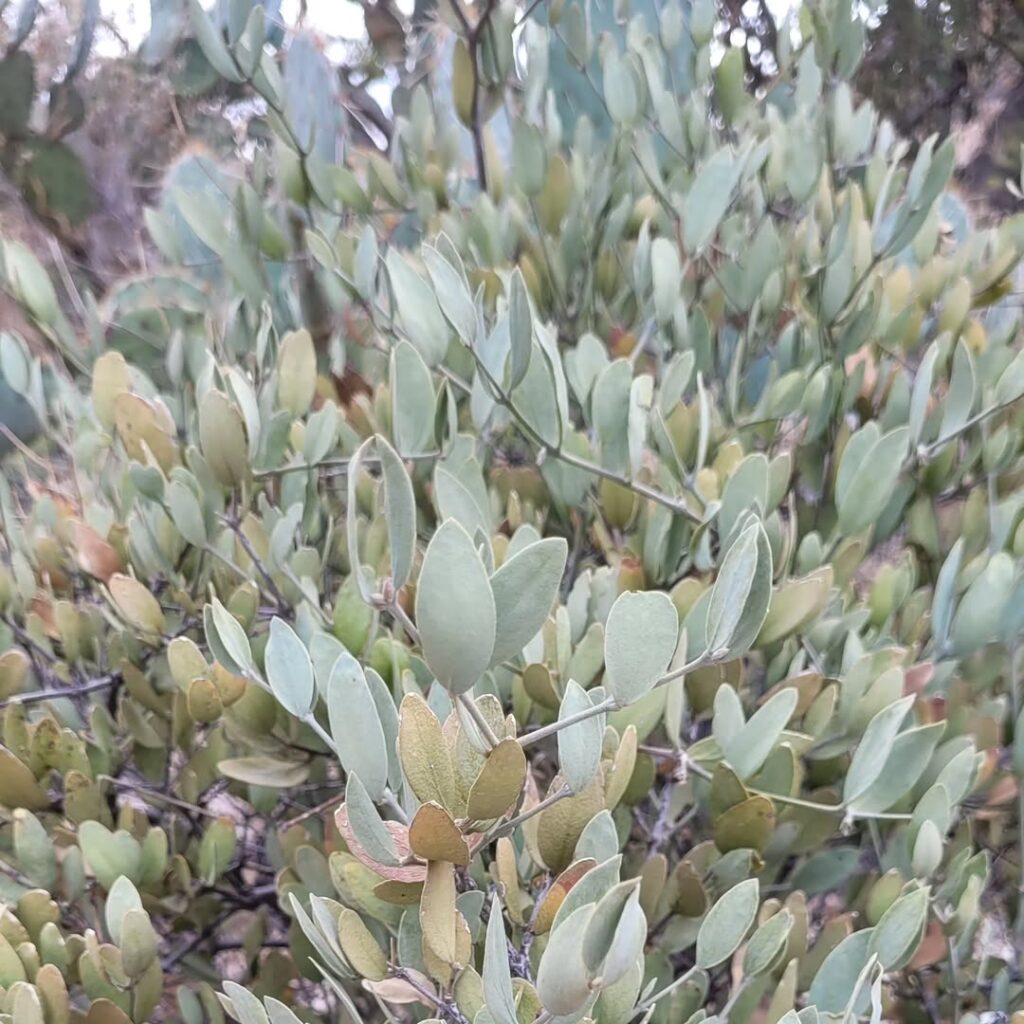
Jojoba (Simmondsia chinensis) is a dense, rounded evergreen shrub native to Arizona’s Sonoran Desert that grows 4-10 feet tall and 6-8 feet wide. This remarkably resilient desert plant produces valuable seeds containing 50% oil that has been used for centuries by Native peoples and now serves important commercial purposes. With its thick, leathery blue-green leaves and cream-colored winter blooms, jojoba thrives in harsh desert conditions while providing essential habitat and food for wildlife. The plant’s seeds are consumed by small mammals and large birds, making it an important food source in the desert ecosystem.
As a dioecious species with separate male and female plants, only females produce the prized single-seeded capsules. Jojoba’s exceptional drought tolerance and ability to withstand extreme temperatures make it an ideal choice for xeriscaping and low-maintenance desert landscaping.
- Hardiness: Zones 8-11; tolerates temperatures as low as 15-18°F
- Light: Full sun; tolerates reflective heat
- Water: Extremely drought tolerant; minimal to no supplemental water needed after establishment
- Soil: Well-drained, sandy or decomposed granite preferred; tolerates saline, nutrient-poor soils with pH 5-9
- Fertilizer: None required; adapted to nutrient-poor desert soils
- Pest/Disease Resistance: Excellent; minimal pest or disease issues
- Growth Rate: Slow-growing, long-lived desert shrub
Chaparral Broom (Baccharis Sarothroides)
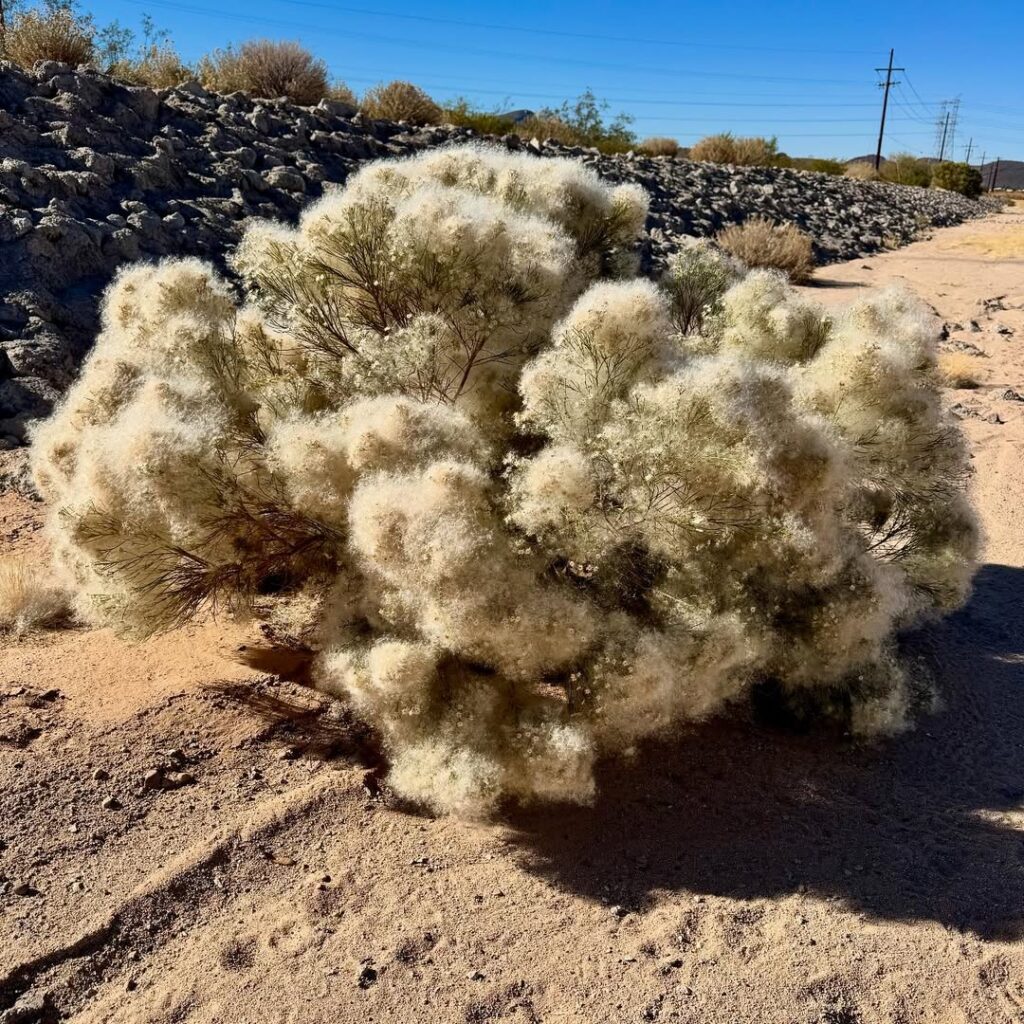
Chaparral Broom (Baccharis sarothroides) is a resilient woody shrub native to the Sonoran Desert, recognized by its distinctive broom-like appearance and green, angular stems. Growing 3-6 feet tall with small, often absent leaves, this dioecious plant produces abundant tiny green flowers from fall through early spring, followed by feathery white seeds that disperse widely on the wind.
This extremely drought-tolerant shrub thrives in Arizona’s harsh desert conditions, colonizing disturbed areas and gravelly soils with ease. Its sticky, resinous stems and minimal water requirements make it perfectly adapted to desert life, though its prolific seed production can make it invasive in urban settings. The small achenes are topped with feathery white bristles that create a silvery appearance when produced in great numbers.
- Hardiness: USDA zones 8-11, tolerates extreme heat and drought
- Light: Full sun to partial shade
- Water: Very low water requirements once established, extremely drought tolerant
- Soil: Well-draining gravelly or sandy soils, tolerates poor and disturbed soils
- Fertilizer: None required, adapted to nutrient-poor desert soils
- Pest/Disease Resistance: Excellent resistance due to natural resinous compounds
- Growth Rate: Moderate to fast, especially in disturbed areas
Fairy Duster (Calliandra Eriophylla)
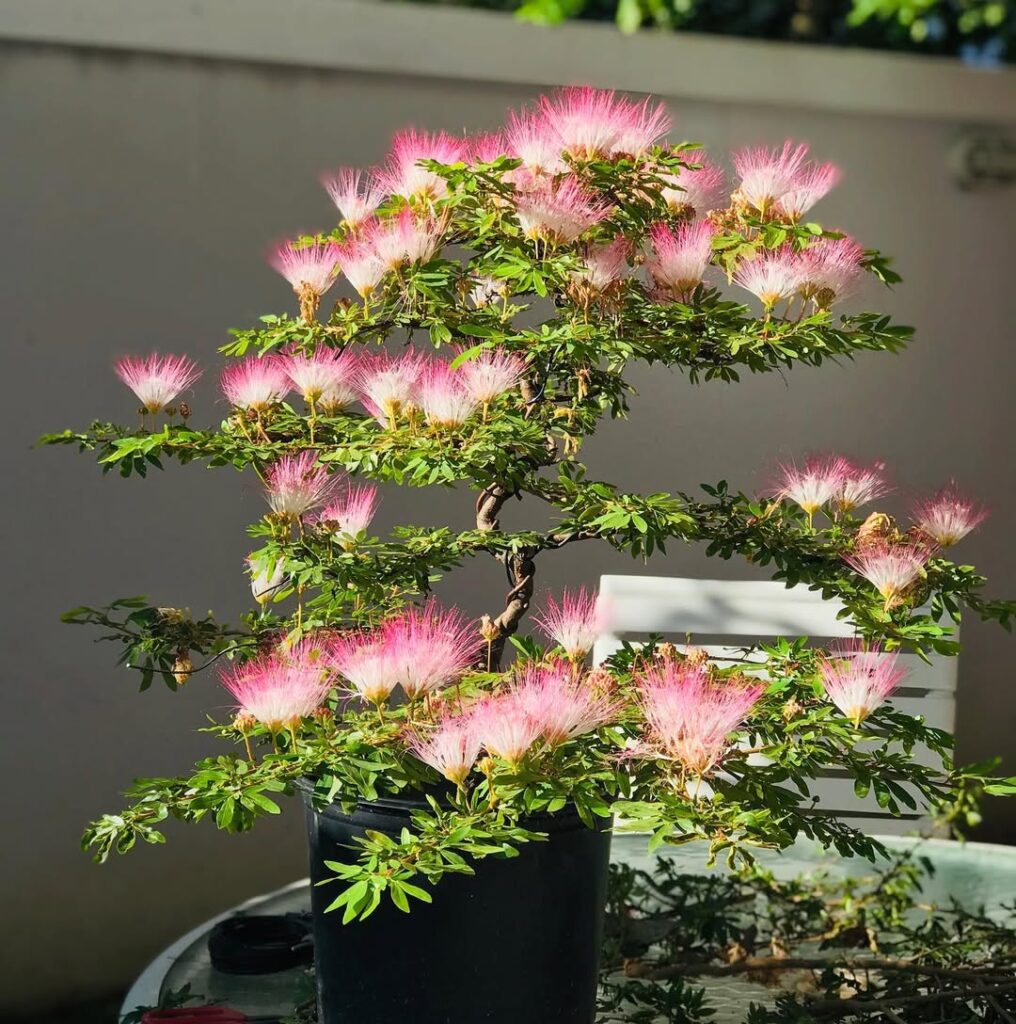
Fairy Duster (Calliandra eriophylla) is a deciduous desert shrub native to the Sonoran Desert, reaching 3 feet tall and 4-6 feet wide with a spreading, densely branched habit. This resilient plant produces spectacular clusters of pink, red, or ivory flowers with prominent stamens that bloom in late winter/early spring and fall. Its fine, compound leaves with grayish leaflets give it a delicate appearance while providing exceptional drought tolerance.
The shrub thrives in Arizona’s harsh desert conditions and serves multiple ecological functions, attracting hummingbirds and butterflies while providing erosion control. The plant produces berries after flowering that provide additional food sources for local wildlife. Its adaptability makes it excellent for xeriscape gardens, rock gardens, and as ground cover, requiring minimal maintenance once established.
- Hardiness: USDA zones 8-11, tolerates temperatures down to 15°F
- Light: Full sun to partial shade; denser growth and more blooms in full sun
- Water: Extremely drought-tolerant once established; minimal supplemental watering needed
- Soil: Well-drained, gravelly or rocky soils; neutral to alkaline pH preferred
- Fertilizer: Minimal fertilization required; occasional feeding useful for container plants
- Pest/Disease Resistance: Generally resistant to pests and diseases; somewhat deer resistant
- Growth Rate: Moderate; growth slows under water stress but enhances flowering
Selecting the Right Native Plants for Your Garden
When you’re choosing native plants for your Arizona garden, you’ll want to match each species to your specific growing conditions, available space, and maintenance preferences. Consider plant adaptations like Blue Bells’ 2-foot height versus Brittlebush’s 2-5 foot spread when planning your garden design.
Evaluate your space requirements carefully. Sweet Acacia provides fragrant flowers and thorny protection, while Palo Verde serves as an iconic specimen tree. For groundcover, Devil’s Claw thrives in low-water conditions. Arizona Rosewood works well as screening or hedging with its dense foliage and 10-15 foot height.
Match sun exposure to plant needs, since most natives require full sun. Well-draining, sandy soils promote successful establishment for drought-resistant species.
Frequently Asked Questions
How Often Should I Water Newly Planted Native Arizona Plants?
Ironically, drought-resistant plants need frequent watering initially. You’ll follow a strict watering schedule: every 1-2 days first two weeks, gradually extending intervals to prevent plant stress until establishment after eight weeks.
What Time of Year Is Best for Planting Drought-Resistant Natives?
You’ll find fall planting works best since cooler temperatures reduce transplant shock and allow root establishment before summer heat. Winter’s also excellent, while spring planting requires more careful timing before temperatures rise.
Do Arizona Native Plants Need Special Fertilizer or Soil Amendments?
You’ll discover that Arizona natives thrive without special fertilizers, debunking common gardening myths. Focus on improving soil composition with organic conditioners rather than addressing fertilization needs, since desert-adapted plants naturally flourish in nutrient-poor conditions.
How Long Does It Take for Native Plants to Establish Roots?
Native plants typically establish roots within one growing season when you use proper planting techniques. Fall planting gives your plants several months for root development before summer heat, greatly improving their survival rates.
Can I Grow Arizona Natives in Containers or Pots?
Like desert treasures in portable oases, you’ll find container gardening opens endless possibilities for Arizona natives. Smart plant selection lets you grow herbaceous perennials, slow-growing shrubs, and even semi-dwarf citrus successfully.
